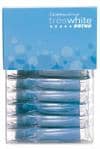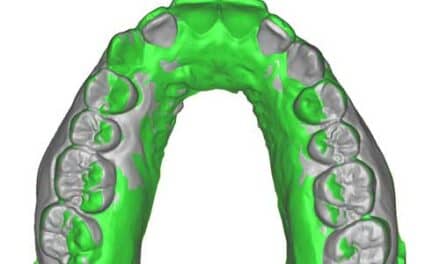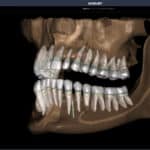
Researchers assessed six anterior maxillary teeth of 40 patients ages 18 to 40. The patients were divided into two groups: in group A, the patients used the bleaching agent during orthodontic treatment; in group B, the patients used the bleaching agent after orthodontic treatment. For each group, a record of the initial tooth shade was taken with a polyvinyl siloxane matrix and a spectrophotometer.
The groups had bleaching treatments with [removed]Opalescence Treswhite Ortho[/removed] (from Ultradent) for 10 days in 45-minute sessions. For group A, the treatment was performed 10 days before finishing orthodontic treatment; at the end of the treatment, a new tooth shade record was taken with the polyvinyl siloxane matrix and a spectrophotometer. The subjects in group B had the same bleaching protocol after their brackets were removed.
For the group without brackets, the color alteration ranged from 3 to 12. For the group with brackets, the range was between 4 and 13, indicating significant tooth bleaching in both groups with and without brackets (P > 0.05), the researchers noted.
"Opalescence Treswhite Ortho was shown to be an efficient bleaching agent in patients wearing fixed orthodontic appliances," they concluded.










